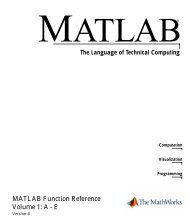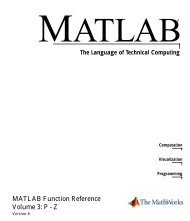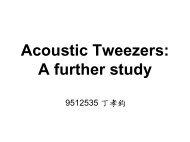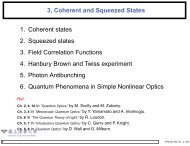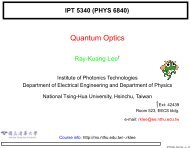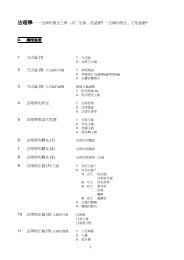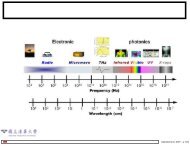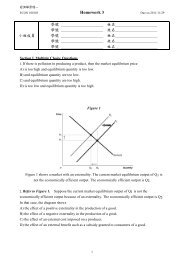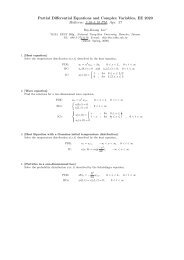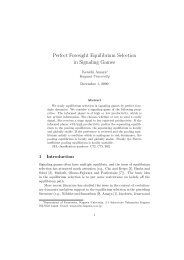Acceleration, Shock and Vibration Sensors
Acceleration, Shock and Vibration Sensors
Acceleration, Shock and Vibration Sensors
You also want an ePaper? Increase the reach of your titles
YUMPU automatically turns print PDFs into web optimized ePapers that Google loves.
Chapter 5<br />
temperatures exceeding its range, or large electric fields, the piezoelectric properties<br />
may be drastically altered. There are several classifications of ceramics. First, there<br />
are high-voltage-sensitivity ceramics that are used for accelerometers with built-in,<br />
voltage-amplified circuits. There are high-charge-sensitivity ceramics that are used for<br />
charge mode sensors with temperature ranges to 400°F (205°C). This same type of<br />
crystal is used in accelerometers that use built-in charge-amplified circuits to achieve<br />
high output signals <strong>and</strong> high resolution. Finally, there are high-temperature piezoceramics<br />
that are used for charge mode accelerometers with temperature ranges over<br />
1000°F (537°C) for monitoring engine manifolds <strong>and</strong> superheated turbines.<br />
Structures for Piezoelectric Accelerometers<br />
A variety of mechanical configurations are available to perform the transduction principles<br />
of a piezoelectric accelerometer. These configurations are defined by the nature<br />
in which the inertial force of an accelerated mass acts upon the piezoelectric material.<br />
There are three primary configurations in use today: shear, flexural beam, <strong>and</strong> compression.<br />
The shear <strong>and</strong> flexural modes are the most common, while the compression<br />
mode is used less frequently, but is included here as an alternative configuration.<br />
Shear Mode<br />
Shear mode accelerometer designs bond,<br />
or “s<strong>and</strong>wich,” the sensing material<br />
between a center post <strong>and</strong> seismic mass.<br />
A compression ring or stud applies a<br />
preload force required to create a rigid<br />
linear structure. Under acceleration, the<br />
mass causes a shear stress to be applied<br />
to the sensing material. This stress<br />
results in a proportional electrical output<br />
by the piezoelectric material. The output<br />
is then collected by the electrodes <strong>and</strong><br />
transmitted by lightweight lead wires<br />
to either the built-in signal conditioning<br />
circuitry of ICP® sensors, or directly Figure 5.2.6: Shear mode accelerometer.<br />
to the electrical connector for a charge<br />
mode type. By isolating the sensing crystals from the base <strong>and</strong> housing, shear accelerometers<br />
excel in rejecting thermal transient <strong>and</strong> base bending effects. Also, the shear<br />
geometry lends itself to small size, which promotes high frequency response while<br />
minimizing mass loading effects on the test structure. With this combination of ideal<br />
characteristics, shear mode accelerometers offer optimum performance.<br />
142



